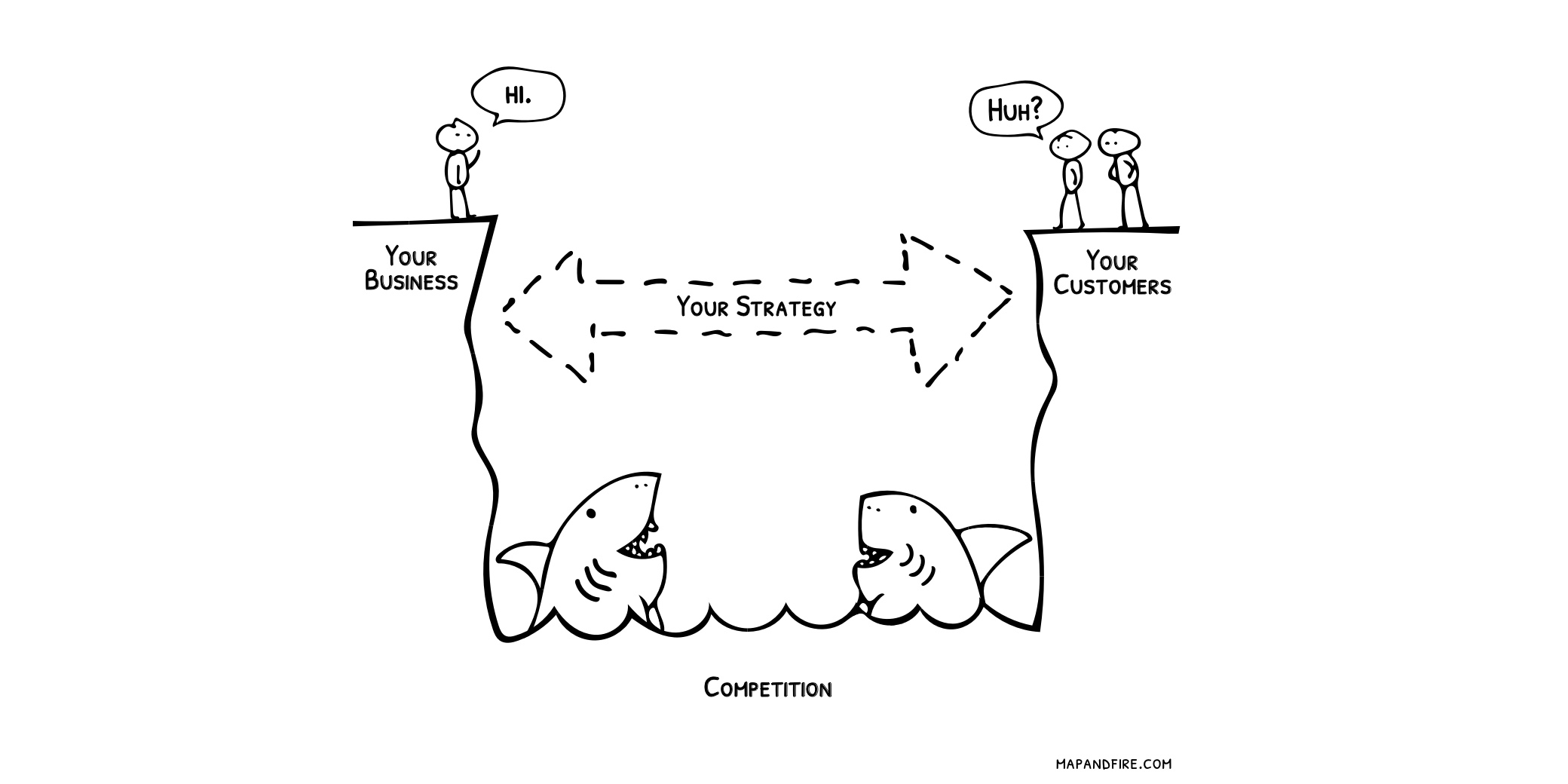
Ask ten different business owners how they define the brand strategy for their business and you’ll likely get ten very different answers. Not just in terms of content, but in structure as well.
The concept of “brand strategy” is so broad, it’s not surprising there are lots of ways to talk about it.
No matter how you choose to define it though, there are common strategic elements that every business needs to account for in some way. These elements impact the success of your business whether you realize it or not.
The following illustrations break down those fundamental areas and how they relate to one another. The goal is to provide a quick visual checklist to spot areas where you may want to dig in more for your own business.

The first thing every business needs to do is set the big picture direction of where you’re headed. This is the top-level view of what your business aims to accomplish, who you’re serving with it, and how you’ll get there.
- Core Purpose: Why the business exists.
- Vision Statement: How the world will look if you accomplish everything you’re seeking to do.
- Core Values: What you believe and how you’ll behave during your journey.
- Big Goals: The key milestones you’ll hit along the way.
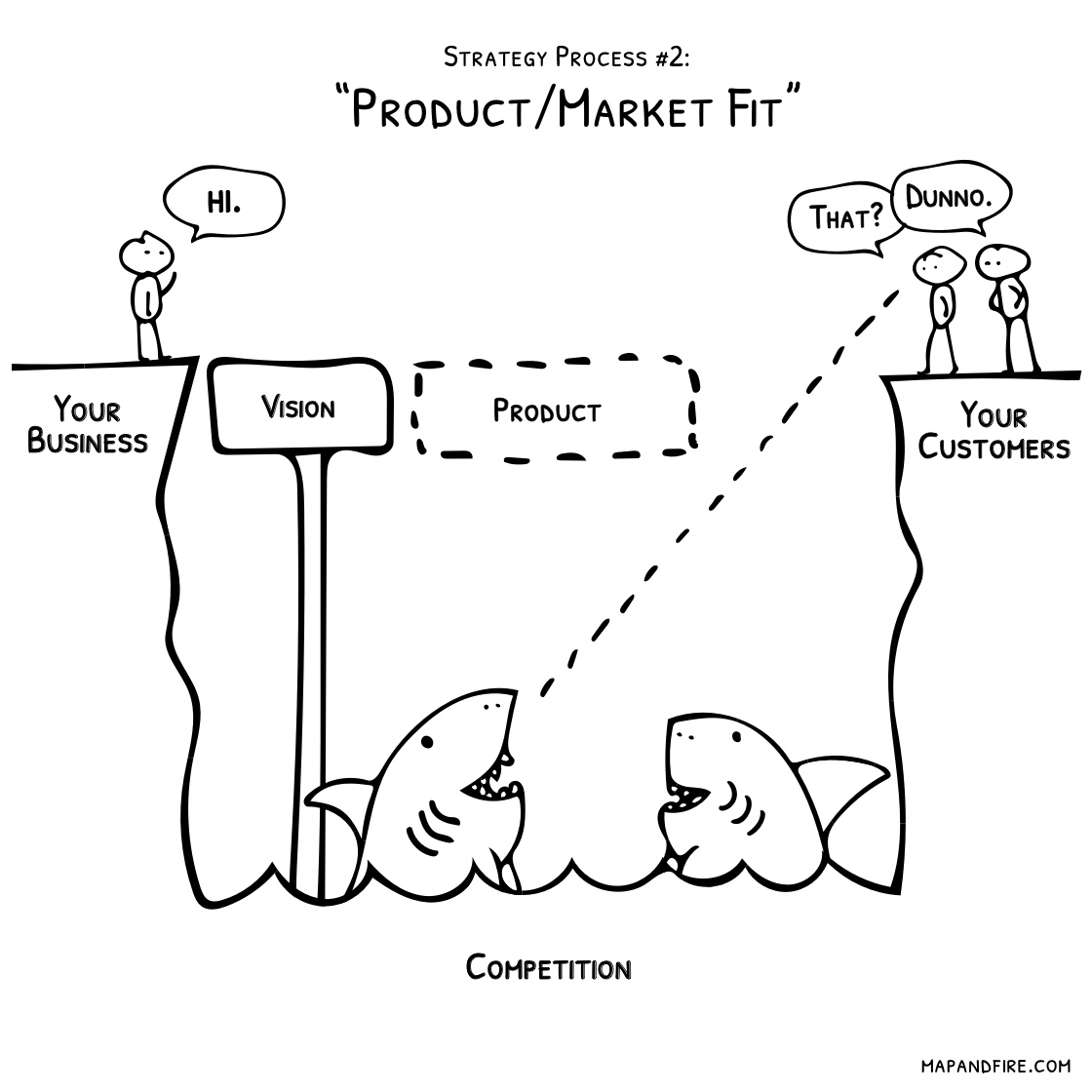
Positioning is the process of determining how your product or service (i.e. your “offering”) uniquely solves an important problem for your customers.
We define brand positioning strategy as:
- Customers: Who are your target customers, what problem are you solving for them, and what do they value in a solution?
- Competition: What other solutions are available for your customers? What’s the optimal position for your brand in that landscape?
- Offering: How do the features of your specific solution align with what your customers value most? What advantages do you have in creating and delivering them?
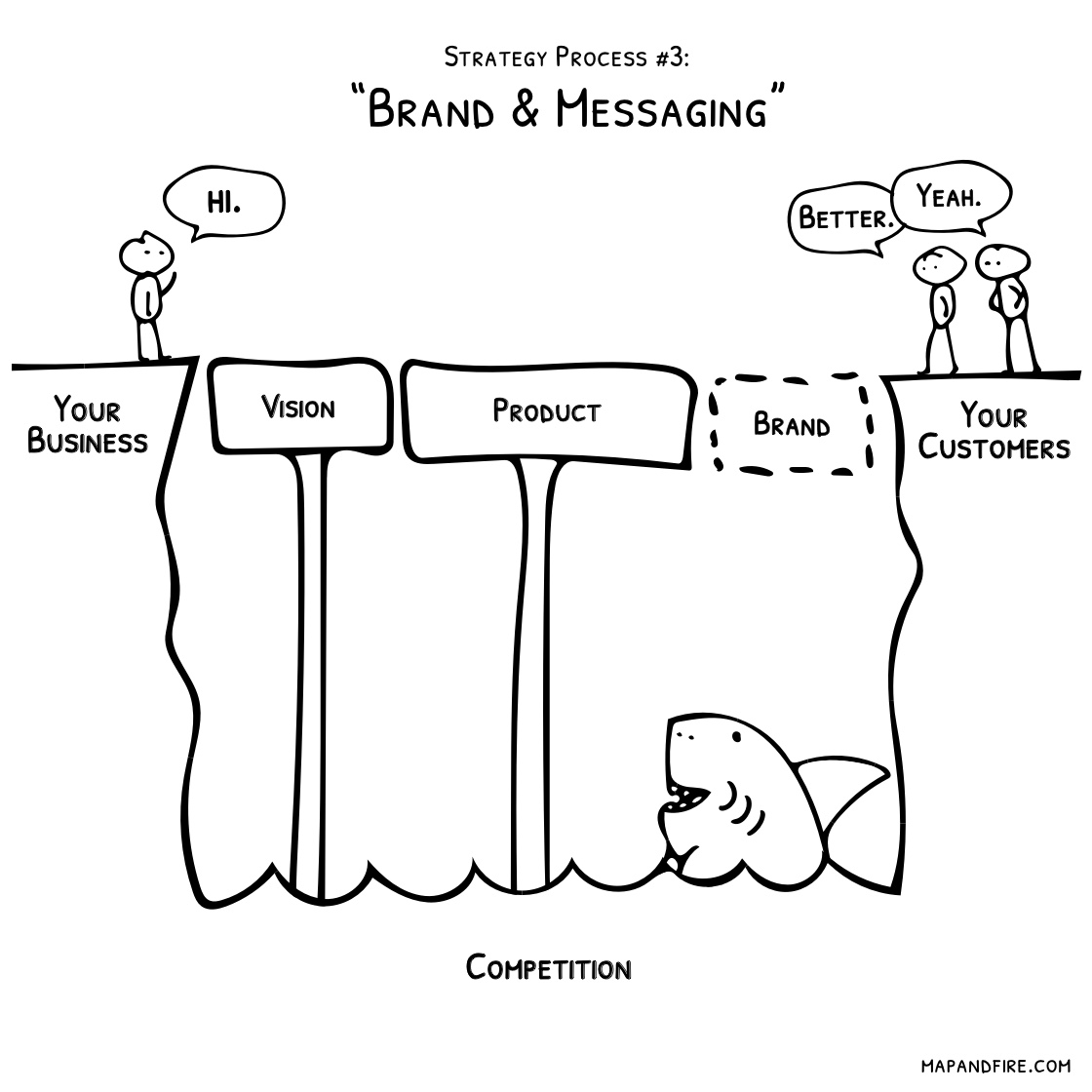
Your brand’s visuals and messaging are what your customers see first so it’s tempting to jump straight to that step. But as the illustration shows, this step is actually an extension of the previous areas of your strategy.
These pieces need to embody both your big picture direction and the qualities of your solution to your customers.
- Brand Visuals: How you connect emotionally with your customers and build trust through images, graphics, and video.
- Key Messages: The actual words and messages you use to communicate what you’re providing your customers on functional, emotional, and aspirational levels.
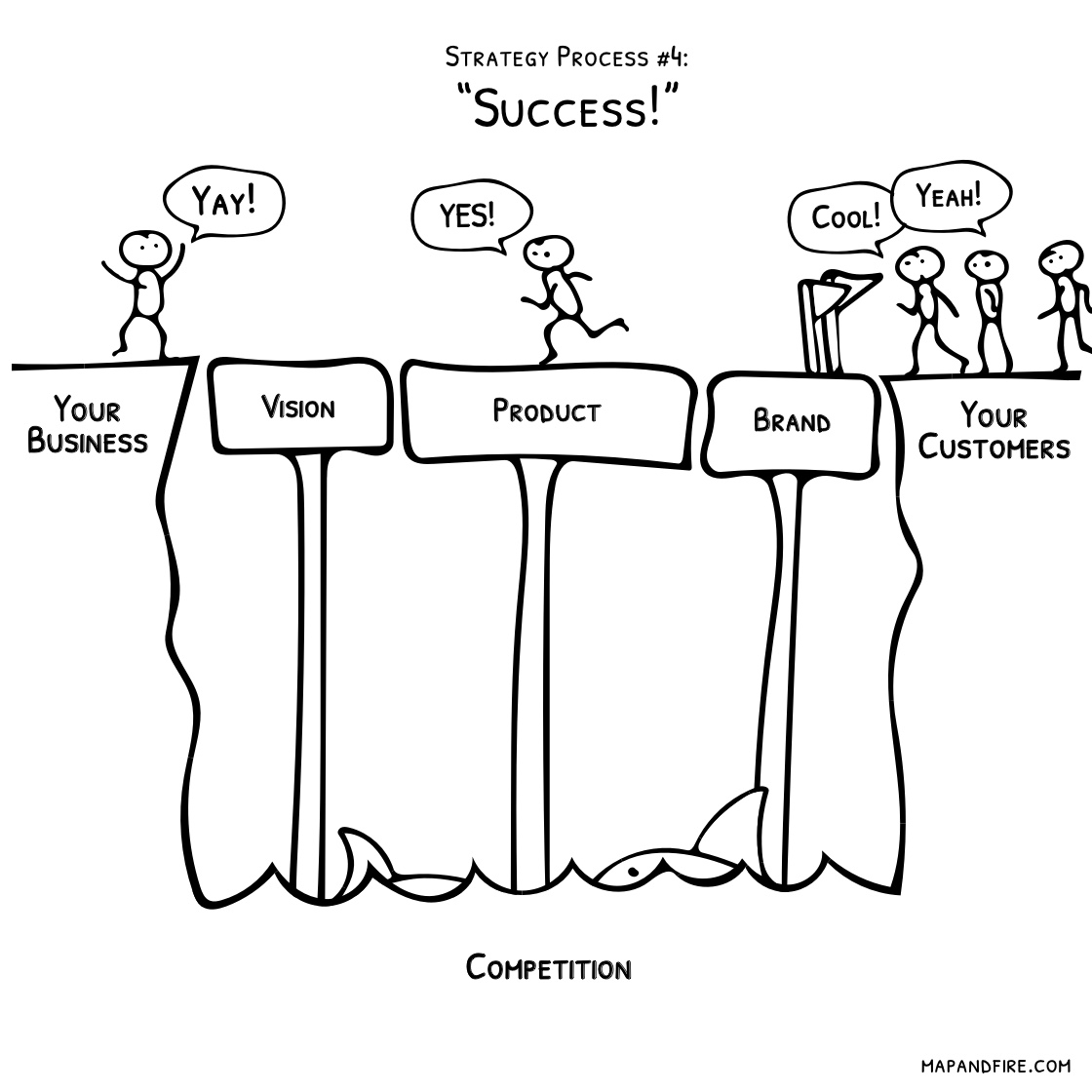
When all of these areas are working in harmony, it creates a solid bridge between you and your customers.
Your competition will always be lurking, but your customers will be less likely to fall into their open jaws.
Are There Flaws In Your Bridge?
Now that we’ve seen an ideal version of your strategy, let’s explore the problems that crop up when certain pieces are weak or missing.

If you haven’t set the direction for your company the integrity and effectiveness of your strategy is going to be weak. If you’re pointing at the wrong customers, your internal team (which may just be you) won’t be able to work cohesively to fix the issues.
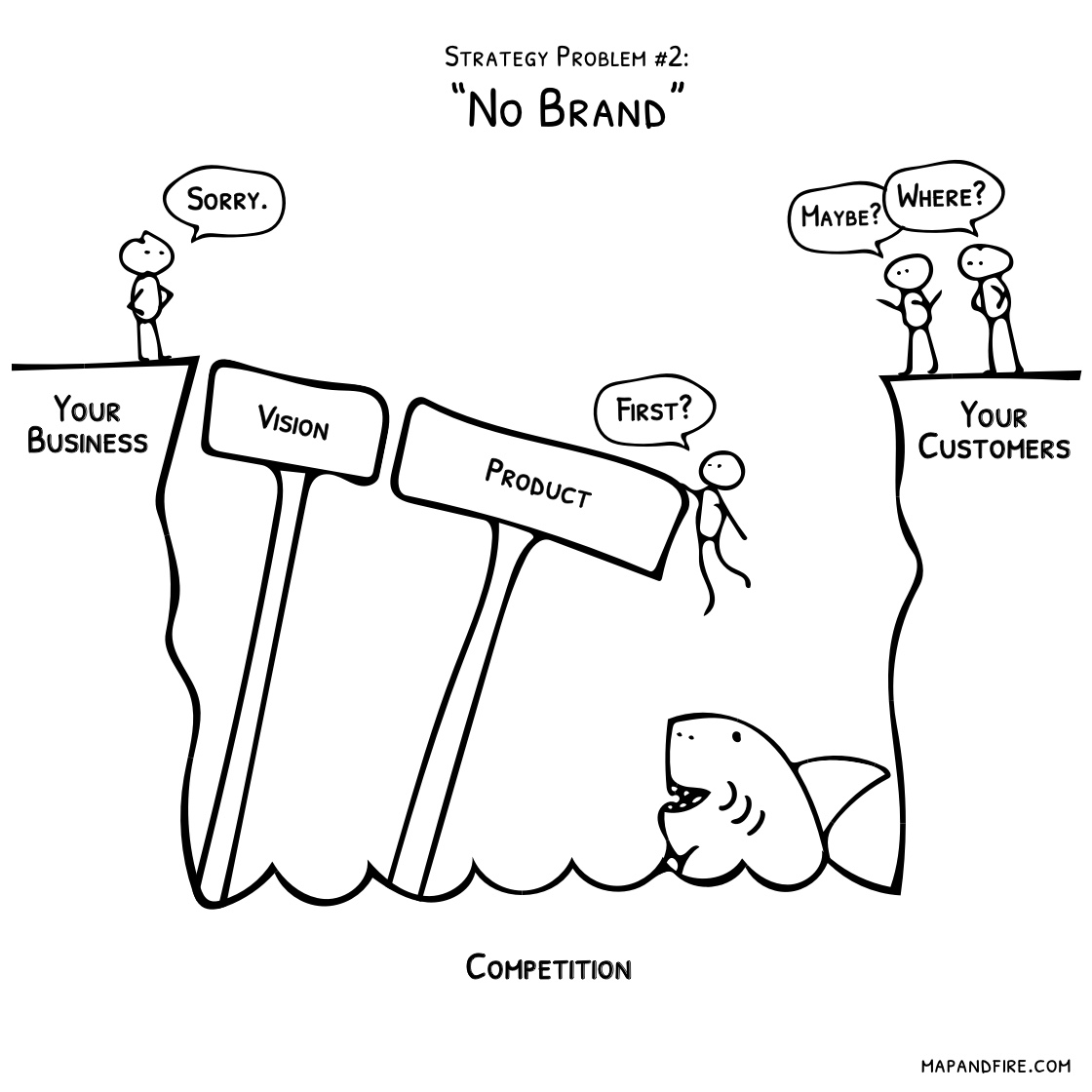
Without clear brand visuals and messaging, your customers won’t trust your solution. If anyone finds you at all, it’ll be a leap of faith that’s not likely to turn into a long term relationship.
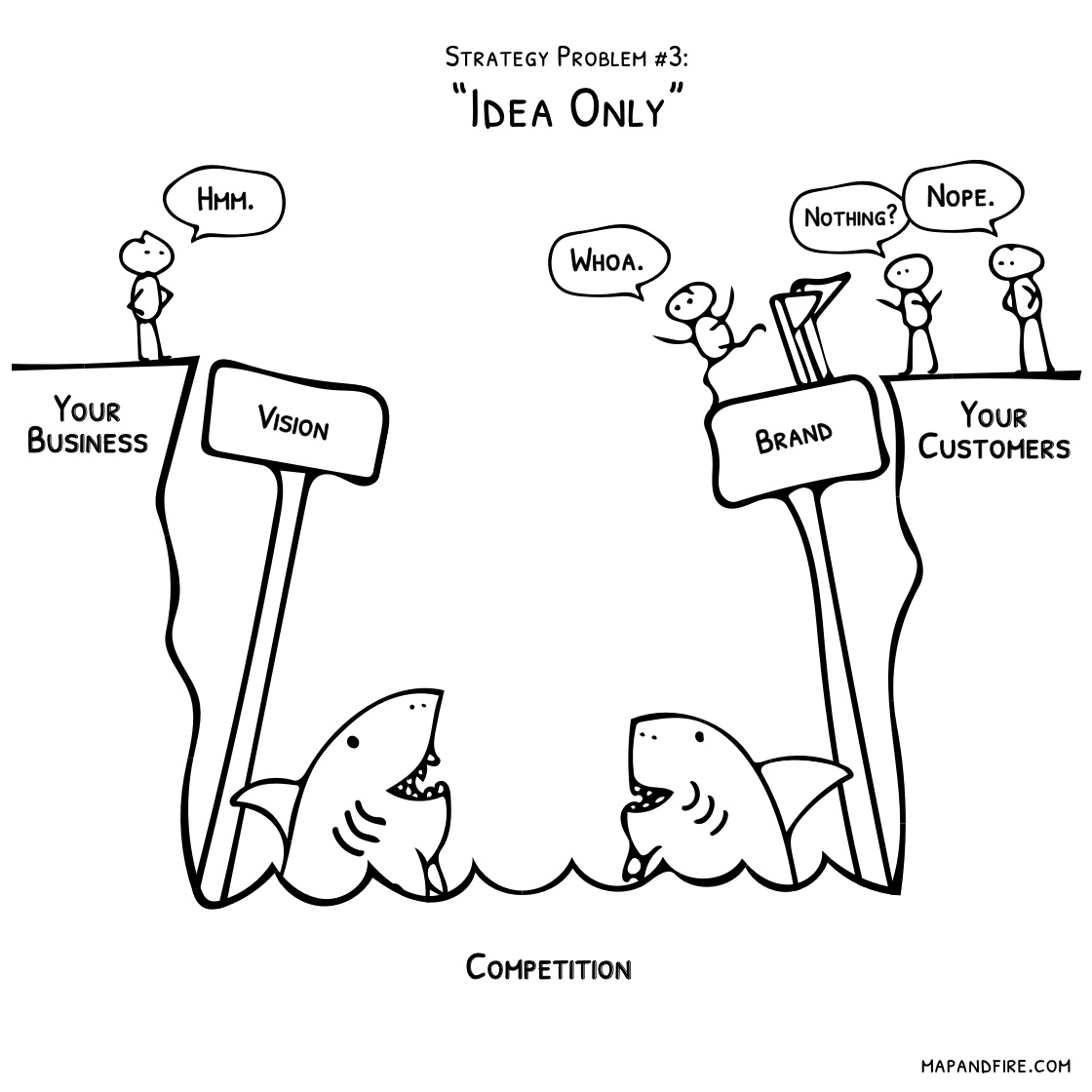
In the early days of a new business, it’s smart to gauge customer interest about your idea before developing your offering. But even with this approach, you still need to think strategically about your positioning. What problem are you solving for your customers and why should they choose you over some other solution?
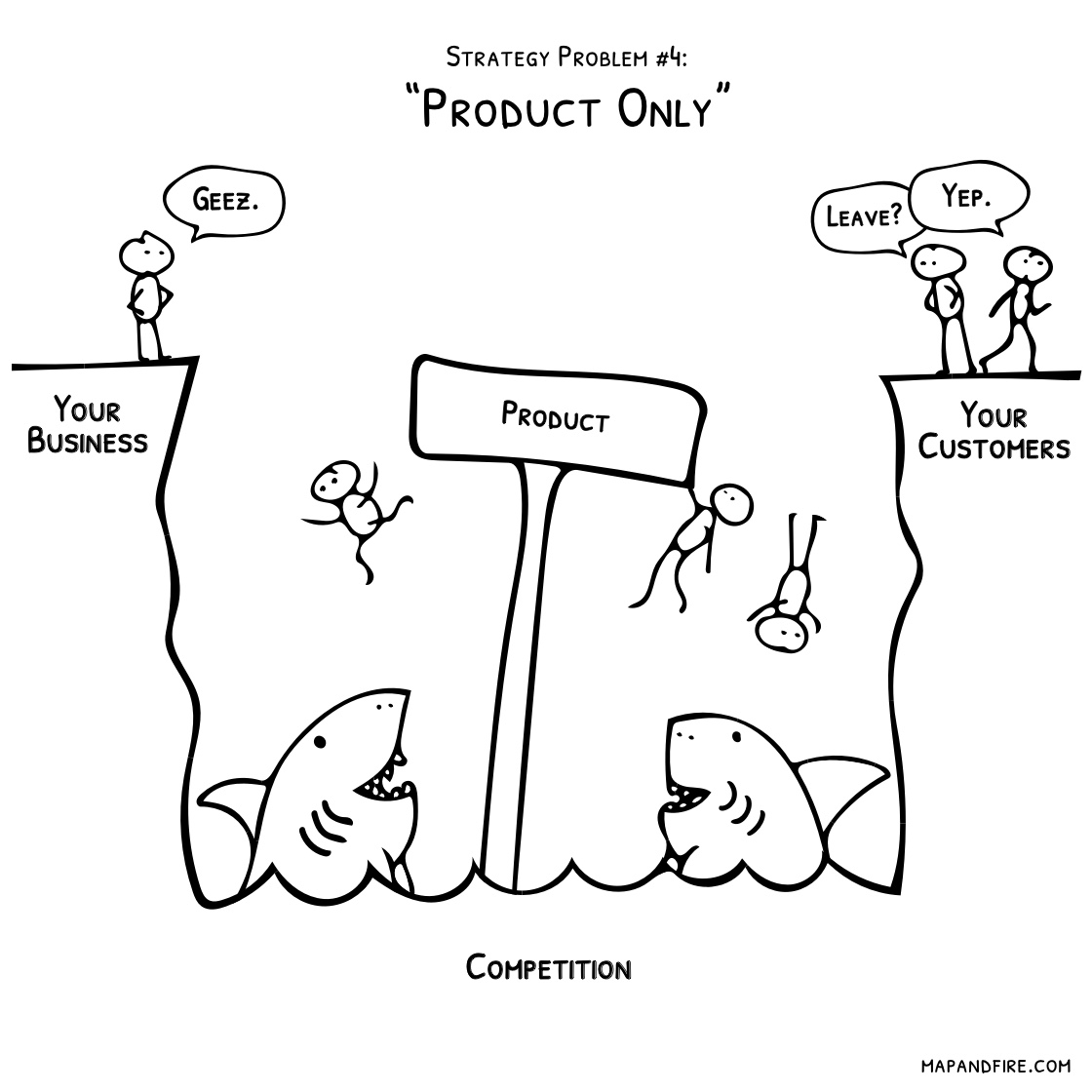
Because your positioning is so critical, it’s tempting to skip past defining a vision and jump straight to your offering. It’s also easy to get so caught up in the endless loop of refining your product that you forget the importance of brand and messaging. If you focus on your offering in isolation, you’ll end up losing customers on both ends.
Get Some Free Help
If you need help with any of these areas, you can click below to download our free brand strategy workbook. Or you can learn more about our Brand Guidebook process and see how it can help strengthen and grow your brand,


